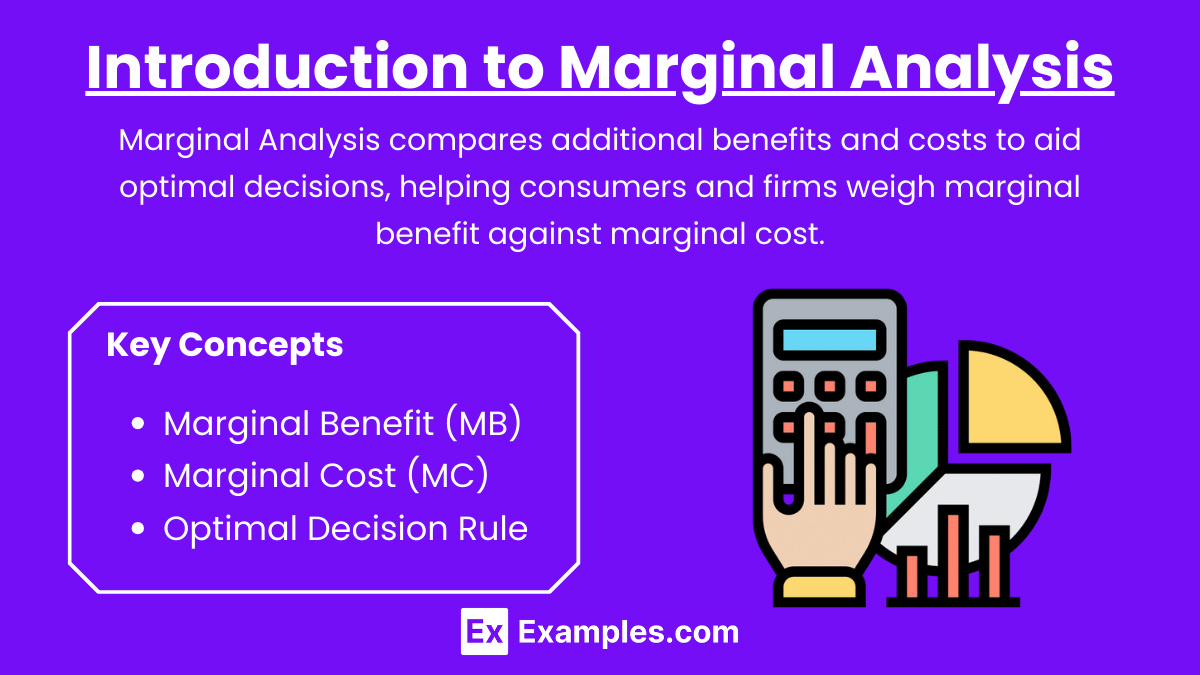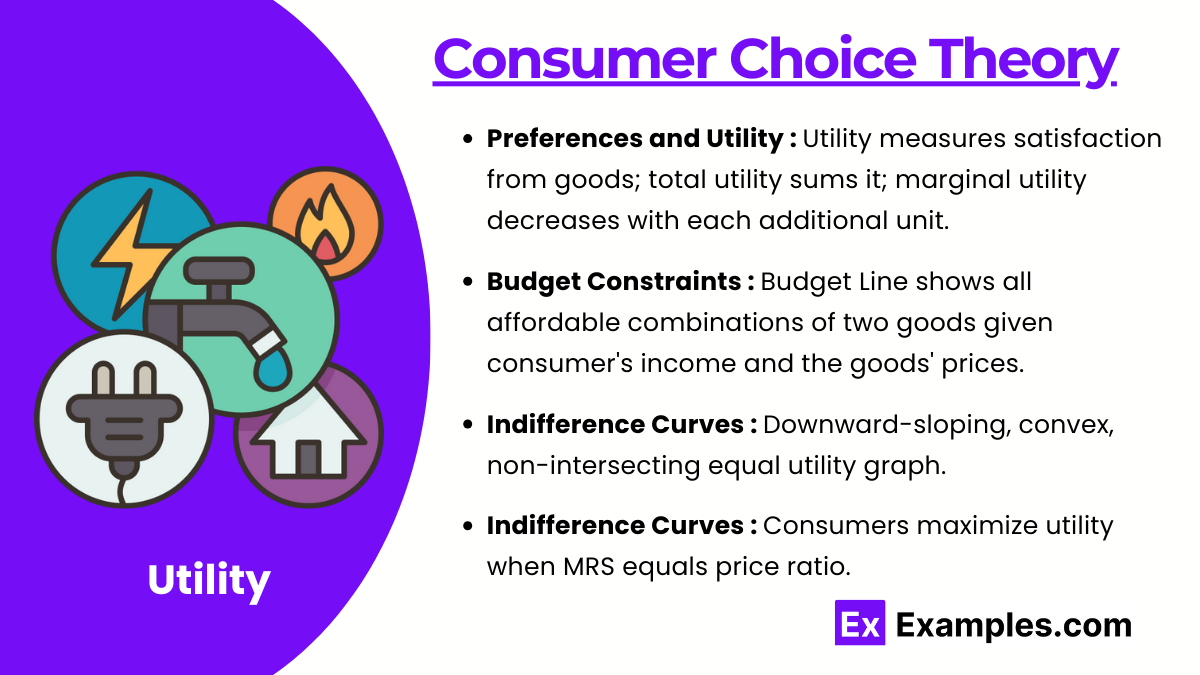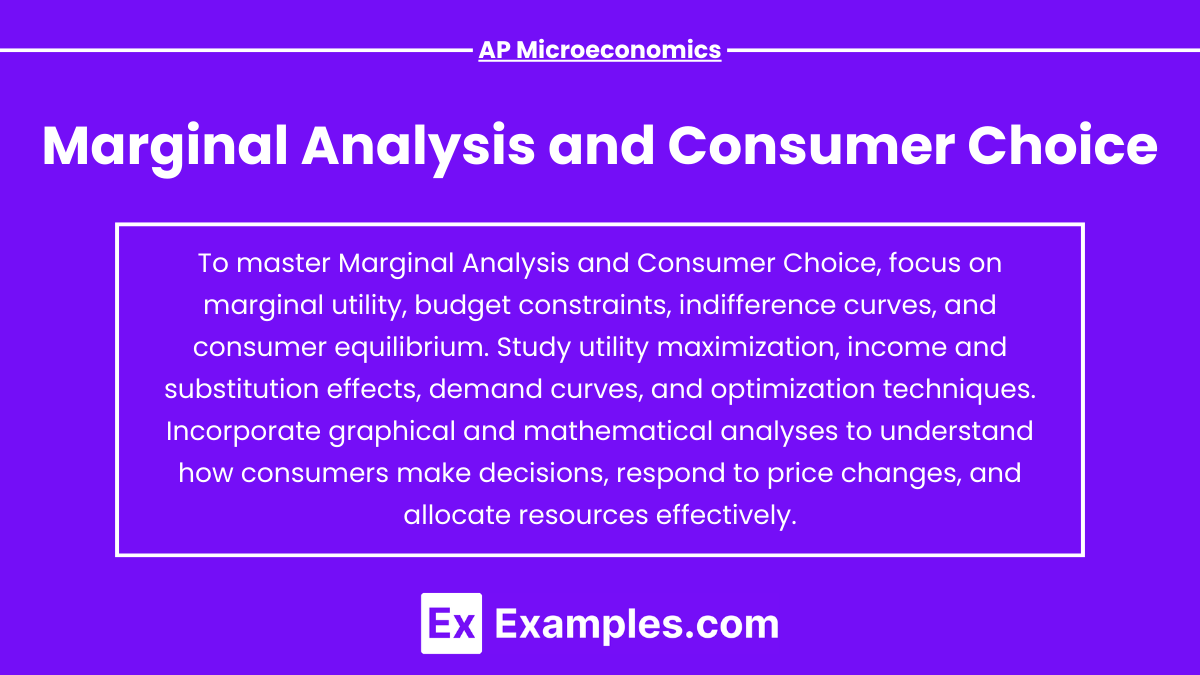Marginal Analysis and Consumer Choice are fundamental concepts in AP Microeconomics, focusing on how consumers make decisions to maximize their satisfaction within budget constraints. Marginal analysis examines the additional benefits and costs of consuming one more unit of a good or service, guiding optimal decision-making. Consumer choice theory explores preferences, utility, and the trade-offs individuals face when allocating limited resources. Understanding these principles enables students to analyze behavior, predict responses to changes in prices and income, and apply economic reasoning to real-world scenarios.
Learning Objectives
When studying Marginal Analysis and Consumer Choice for AP Microeconomics, you should focus on understanding how consumers make optimal decisions to maximize their utility within budget constraints. Key objectives include analyzing marginal utility and the law of diminishing marginal utility, interpreting budget lines and shifts, and utilizing indifference curves to represent consumer preferences. Additionally, master the concept of the marginal rate of substitution (MRS) and how it equates to price ratios at equilibrium. Finally, apply graphical and mathematical methods to solve utility maximization problems and evaluate the effects of changes in prices and income on consumer behavior.
Understanding Marginal Analysis and Consumer Choice is fundamental to mastering Microeconomics and excelling in the AP Microeconomics exam. This guide provides comprehensive notes on these topics, complete with key concepts, graphical analyses, formulas, and practical examples to ensure a thorough understanding.
1. Introduction to Marginal Analysis

Marginal Analysis is a decision-making tool used in economics to evaluate the additional benefits and costs of a choice. It helps consumers and firms make optimal decisions by comparing the marginal benefit (the additional satisfaction or utility gained) to the marginal cost (the additional expense incurred).
Key Concepts:
- Marginal Benefit (MB): The additional satisfaction or utility received from consuming one more unit of a good or service.
- Marginal Cost (MC): The additional cost incurred from producing or consuming one more unit of a good or service.
- Optimal Decision Rule: Continue an activity until MB = MC. At this point, resources are allocated efficiently.
2. Consumer Choice Theory

Consumer Choice Theory explores how individuals make decisions to allocate their limited resources (income) among various goods and services to maximize their utility (satisfaction).
Key Components:
1. Preferences and Utility
- Utility: A measure of satisfaction or happiness derived from consuming goods and services.
- Total Utility (TU): The total satisfaction obtained from consuming a certain quantity of goods.
- Marginal Utility (MU): The additional utility gained from consuming one more unit of a good.Law of Diminishing Marginal Utility: As consumption of a good increases, the marginal utility of each additional unit tends to decrease.
2. Budget Constraints
- Budget Line: Represents all combinations of two goods that a consumer can afford given their income and the prices of the goods.
- Equation:
- Where Px and Py are the prices of goods X and Y, respectively.
3. Indifference Curves
- Indifference Curve: A graph showing different combinations of two goods that provide the same level of utility to the consumer.
- Properties:
- Downward Sloping: To maintain the same utility, an increase in one good must be offset by a decrease in the other.
- Convex to the Origin: Reflects the assumption of diminishing marginal rates of substitution.
- Non-Intersecting: Indifference curves cannot cross each other.
4. Utility Maximization
Consumers aim to reach the highest possible indifference curve within their budget constraint.
Utility Maximization Condition: The consumer maximizes utility where the Marginal Rate of Substitution (MRS) equals the Price Ratio (P_x/P_y).
Graphical Analysis

1. Budget Line and Indifference Curves
- Budget Line: Shifts with changes in income or prices.
- Income Change: Parallel shift.
- Price Change: Rotation of the budget line.
- Equilibrium Point: The point where the highest possible indifference curve is tangent to the budget line. Here, MRS = Price Ratio.
2. Effects of Price and Income Changes
- Price of a Good Changes:
- Substitution Effect: Change in consumption due to a relative price change.
- Income Effect: Change in consumption resulting from the change in purchasing power.
- Income Changes:
- Shifts in the budget line can lead to higher or lower utility levels depending on whether income increases or decreases.
4. Important Formulas
- Marginal Utility (MU):
- Marginal Rate of Substitution (MRS):
- Budget Line Equation:
Examples
Example 1. Deciding How Many Cups of Coffee to Purchase
Scenario: Emma loves drinking coffee and is deciding how many cups to buy each morning. Each additional cup of coffee provides her with a certain level of satisfaction (marginal utility), but each cup also costs her money (marginal cost).
Analysis: Emma evaluates the marginal utility (MU) she gains from each additional cup of coffee against the marginal cost (MC) of purchasing it. Suppose the first cup provides 10 utils, the second 8 utils, the third 5 utils, and so on, while each cup costs $3. If Emma’s marginal utility per dollar spent (MU/P) decreases with each additional cup, she will continue purchasing cups until MU=MC. For instance, if the third cup provides 5 utils and costs $3, the marginal utility per dollar is 5/3≈1.67. If the fourth cup only provides 2 utils, its MU/P is 2/3≈0.67, which is less than the marginal cost. Therefore, Emma stops purchasing after the third cup to maximize her total utility.
Example 2. Choosing Between Renting Movies Online or Going to the Theater
Scenario: John enjoys watching movies and is deciding between renting movies online or going to the theater. He must consider the additional satisfaction from each option against their respective costs.
Analysis: John conducts a marginal analysis by comparing the marginal utility of renting an additional movie online versus watching another movie at the theater. If renting online provides higher marginal utility per dollar compared to the theater option, he will prefer renting more movies online. For example, if renting a movie online gives him 15 utils for $3 (MU/P=5) and watching a movie at the theater gives him 12 utils for $4 (MU/P=3), John gains more utility per dollar by renting online. Therefore, he allocates more of his entertainment budget to online rentals until the MU/P of both options equalize.
Example 3. Allocating Time Between Studying and Leisure
Scenario: Sarah is a college student balancing her time between studying for exams and engaging in leisure activities. She aims to maximize her overall satisfaction from both studying and leisure.
Analysis: Sarah uses marginal analysis to decide how to allocate her limited time. She assesses the marginal utility of an additional hour spent studying versus an additional hour of leisure. If an extra hour of studying increases her utility by 20 utils and costs her 10 utils of leisure, she will continue to study until the marginal utility of studying equals the marginal utility of leisure. Suppose after five hours of studying, the marginal utility of an additional hour drops to 10 utils, matching the utility lost from an hour of leisure. At this point, Sarah achieves an optimal balance, maximizing her total utility by allocating her time where MUstudying=MUleisure.
Example 4. Deciding How Much to Spend on Healthy Foods vs. Junk Foods
Scenario: Alex is budgeting his weekly grocery expenses between healthy foods (fruits and vegetables) and junk foods (snacks and sodas). He wants to maximize his dietary satisfaction while staying within his budget.
Analysis: Alex performs marginal analysis by comparing the marginal utility per dollar of healthy foods with that of junk foods. If the first dollar spent on healthy foods yields 8 utils and the first dollar on junk foods yields 10 utils, he initially prefers junk foods. However, due to the Law of Diminishing Marginal Utility, as he buys more junk foods, their marginal utility decreases. Conversely, the marginal utility of healthy foods may remain relatively stable or decrease at a slower rate. Alex continues to allocate his budget to junk foods until the marginal utility per dollar spent on junk foods equals that of healthy foods. This ensures that his total utility from both categories is maximized within his budget constraint.
Example 5. Balancing Work Hours and Free Time to Maximize Happiness
Scenario: Maria works part-time and enjoys her free time. She is considering whether to work additional hours or spend that time on hobbies and relaxation.
Analysis: Maria evaluates the marginal benefit of working an extra hour (additional income and career satisfaction) against the marginal cost (reduced free time and leisure). Suppose an extra hour of work provides her with $15 and a marginal utility of 12 utils, while that hour of leisure gives her 10 utils of happiness. If the marginal utility of the extra work hour exceeds the marginal cost in terms of lost leisure utility, Maria will choose to work more. However, as she works more hours, the marginal utility of each additional work hour may decrease due to fatigue, while the marginal utility of leisure may increase as she becomes more deprived of free time. Maria continues to adjust her work hours until the marginal utility of working equals the marginal utility of leisure, thereby maximizing her overall happiness.
Multiple Choice Questions
Question 1
Which of the following best describes the Marginal Utility (MU) of a good?
A. The total satisfaction received from consuming all units of the good.
B. The additional satisfaction received from consuming one more unit of the good.
C. The price a consumer is willing to pay for the good.
D. The utility lost from consuming one less unit of the good.
Answer: B. The additional satisfaction received from consuming one more unit of the good.
Explanation: Marginal Utility (MU) refers to the additional satisfaction or benefit that a consumer gains from consuming one more unit of a good or service. It is a fundamental concept in understanding consumer choice and decision-making.
- Option A: Describes Total Utility (TU), not Marginal Utility.
- Option B: Correctly defines Marginal Utility as the extra satisfaction from consuming an additional unit.
- Option C: Refers to the willingness to pay, which is related to utility but not the definition of Marginal Utility.
- Option D: Describes a loss in utility, which is not related to the concept of Marginal Utility.
Understanding that MU measures the change in total utility from consuming an additional unit helps consumers make informed decisions about how much of a good to purchase.
Question 2
According to the Law of Diminishing Marginal Utility, as a consumer consumes more units of a good:
A. The total utility increases at an increasing rate.
B. The total utility decreases.
C. The marginal utility of each additional unit increases.
D. The marginal utility of each additional unit decreases.
Answer:D. The marginal utility of each additional unit decreases.
Explanation: The Law of Diminishing Marginal Utility states that as a consumer consumes more units of a good, the additional satisfaction (marginal utility) gained from each additional unit tends to decrease.
- Option A: Incorrect because while total utility does increase, it does so at a decreasing rate, not an increasing rate.
- Option B: Incorrect because total utility increases, although the rate of increase slows down.
- Option C: Incorrect as it suggests that marginal utility increases, which is the opposite of what the law states.
- Option D: Correctly states that marginal utility decreases with each additional unit consumed.
Example: The first slice of pizza may provide significant satisfaction, but by the fourth or fifth slice, each additional slice offers less satisfaction than the previous one.
Question 3
Maria has $20 to spend on two goods: notebooks and pens. Notebooks cost $4 each, and pens cost $2 each. If Maria is maximizing her utility, which of the following must be true?
A. She spends all her money on notebooks.
B. The marginal utility per dollar spent on notebooks equals the marginal utility per dollar spent on pens.
C. The marginal utility of notebooks is greater than the marginal utility of pens.
D. The total utility from notebooks is equal to the total utility from pens.
Answer:B. The marginal utility per dollar spent on notebooks equals the marginal utility per dollar spent on pens.
Explanation: When a consumer maximizes utility, they allocate their budget so that the marginal utility per dollar spent on each good is equal. This ensures that the last dollar spent on each good provides the same level of additional satisfaction, optimizing overall utility.
- Option A: Incorrect because utility maximization typically involves purchasing a combination of goods, not spending all money on one good.
- Option B: Correct. The condition for utility maximization is:
This means the additional satisfaction per dollar is the same for both goods.
- Option C: Incorrect because if the marginal utility per dollar spent on notebooks were greater, Maria would gain more utility by purchasing more notebooks and fewer pens until equality is achieved.
- Option D: Incorrect because total utilities being equal is not a requirement for utility maximization; it’s the marginal utilities per dollar that need to be equal.


